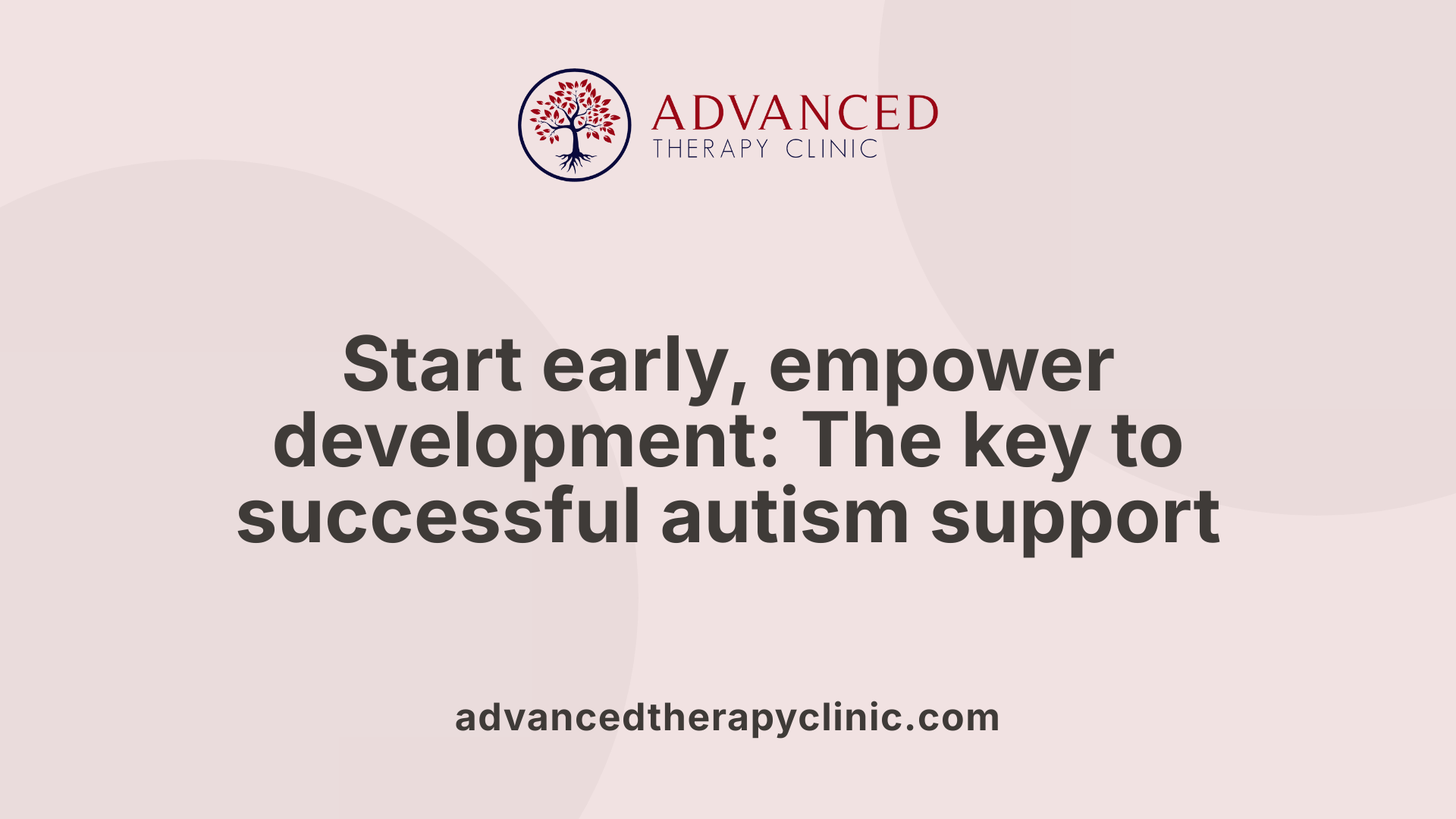TEACCH Method For Autism


Understanding Autism and the Role of Therapy
Autism Spectrum Disorder (ASD) presents unique challenges that impact communication, social interaction, and behavior. Early and individualized therapeutic interventions can significantly improve outcomes for children on the spectrum. This article explores the range of therapy-related fields involved in ASD care, highlighting early intervention's role and the broad multidisciplinary framework that supports development and daily functioning.
The Spectrum of Therapy-Related Fields for Autism Support

What types of therapies are included under the collective term for therapy-related fields?
Therapy-related fields include a variety of approaches tailored to address mental health, developmental, and physical challenges. Common therapies encompass psychotherapies such as psychoanalysis, cognitive-behavioral therapy (CBT), humanistic, and integrative approaches focused on mental and emotional well-being.
Specialized therapies that specifically support individuals with autism spectrum disorder (ASD) include:
- Applied Behavior Analysis (ABA): A research-backed approach using behavioral principles to develop communication, social, daily living, and safety skills.
- Occupational Therapy (OT): Targets motor skills, sensory processing, communication, and the ability to perform everyday routines.
- Physical Therapy (PT): Focuses on improving gross motor functions including sitting, crawling, walking, and overall coordination.
- Speech Therapy: Addresses both verbal and nonverbal communication challenges using tailored interventions like picture exchange communication systems (PECS) and sign language.
- Developmental Therapies: Such as DIR/Floortime, which use play-based methods to enhance emotional and relational development.
These therapies are often combined in a multidisciplinary approach to provide comprehensive support that meets each child’s unique needs.
Focus areas of each therapy
| Therapy | Main Focus Areas | Notable Strategies/Goals |
|---|---|---|
| Applied Behavior Analysis (ABA) | Communication, social, self-care, behavior modification | Uses positive reinforcement and systematic teaching to promote skill acquisition and reduce behaviors |
| Occupational Therapy (OT) | Motor skills, sensory integration, daily living skills | Develops strategies like finger feeding or pointing integrated into daily routines |
| Physical Therapy (PT) | Gross motor skills, strength, balance, coordination | Manages range of motion and assesses needs for orthotics and mobility aids |
| Speech Therapy | Verbal and nonverbal communication | Employs picture cues, tactile prompts, and individualized goals; sessions typically 2-3 times/week |
| Developmental Therapies | Emotional and relational growth | Uses child-led, play-based activities to foster social and emotional development |
Collectively, these therapeutic fields aim to maximize developmental outcomes for children with autism by addressing diverse needs through evidence-based, individualized interventions.
The Critical Importance of Early Intervention in Autism

How does early intervention affect prognosis for children with autism?
Early intervention significantly improves the prognosis for children with autism. When therapy begins early—ideally before school age—it can enhance communication, social, and cognitive skills. Starting treatment at a young age lays a foundation for better developmental outcomes and long-term functioning.
Benefits of early intervention
All children diagnosed with autism can benefit from early intervention. These services focus on strengthening key areas such as communication, social interactions, and cognitive abilities. Early support helps children gain vital skills needed for daily life and learning, increasing their chances of thriving.
Timing recommendations for starting therapy
According to the CDC, autism spectrum disorder can be diagnosed as early as six months. Regular developmental screenings are recommended to identify needs promptly. The earlier interventions begin, the more effective they tend to be. Early and ongoing therapies maximize developmental progress during critical growth periods.
Target areas of early intervention
Early intervention targets a range of skills including:
- Communication: both verbal and nonverbal
- Social skills: interaction and engagement with others
- Cognitive skills: thinking and problem-solving abilities These areas form the foundation for a child's everyday functioning and learning, which early therapy is designed to build and support.
Applied Behavior Analysis: A Foundation for Skill Development in Autism

What Is ABA Therapy?
Applied Behavior Analysis (ABA) is a research-supported therapy designed to improve socially significant skills in children with autism. It targets a wide range of developmental areas including communication, daily living skills, play, social interaction, cognitive, motor, and safety skills. ABA uses behavioral principles like positive reinforcement and systematic teaching to encourage skill acquisition and reduce challenging behaviors.
How Does ABA Use the Concept of Verbal Behavior?
A cornerstone of ABA is the focus on 'verbal behavior.' Instead of teaching children to simply label objects or actions, ABA emphasizes understanding the functions and purposes of words. This approach helps children use language practically, enhancing their ability to communicate effectively in real-life situations.
What Behavior Management Strategies Does ABA Employ and What Outcomes Are Expected?
Behavior analysts employ careful observation and data collection to systematically measure and modify behaviors. These strategies allow intervention plans to be tailored and adjusted based on ongoing progress. ABA therapy aims to teach functional communication, social skills, and self-care while minimizing challenging behaviors. Recognized and endorsed by government agencies, ABA has a strong track record of producing meaningful, lasting behavioral improvements in individuals with autism.
Speech and Occupational Therapies: Enhancing Communication and Daily Functioning

What is the role and goals of speech therapy in autism?
Speech therapy plays a crucial role in supporting children with autism by addressing their unique language and communication challenges. It helps improve both verbal and nonverbal communication skills, enabling children to better express needs, desires, and engage socially. Speech therapists assess each child's specific needs and develop individualized goals focused on enhancing social communication and language abilities.
What techniques are used in speech therapy?
Speech therapy employs a variety of strategies tailored to each child's strengths and challenges. These include the use of picture cues, tactile prompts, and augmentative communication methods such as Picture Exchange Communication System (PECS) and sign language. Sessions typically last 30 to 45 minutes and occur two to three times weekly. Therapists emphasize social communication skills as well as articulation practice to promote clearer speech and interaction.
What does occupational therapy focus on, and how is it delivered?
Occupational therapy (OT) supports children with autism by improving motor, sensory processing, and daily living skills. Therapists evaluate children’s abilities and collaborate with families to design strategies that reinforce functional skills in meaningful daily contexts. OT methods include sensory integration therapy and adaptive tools to enhance motor coordination, cognitive function, and play skills. For example, therapists help develop finger feeding or pointing, crucial for communication and independence, within routine activities to encourage participation and learning.
In summary, both speech and occupational therapies offer complementary support that fosters essential communication and everyday functioning skills in children with autism, often serving as part of a broader multidisciplinary approach.
Physical Therapy’s Role in Supporting Motor Skills and Mobility for Children with Autism

What Are the Objectives of Physical Therapy for Children with Autism?
Physical therapy (PT) aims to enhance children's gross motor abilities and physical functioning. It focuses on improving sitting, crawling, walking, balance, coordination, strength, and range of motion. PT encourages active participation in daily activities by addressing physical limitations that may impact movement and mobility.
How Does Physical Therapy Support Gross Motor Skills Development?
PT targets fundamental gross motor skills essential for independence and everyday activities. Therapists work with children to strengthen muscles, improve balance, and develop coordination. This support helps children gain better control over their bodies, making it easier to sit unsupported, crawl, and walk.
How Are Orthotics and Mobility Aids Utilized in Physical Therapy?
Physical therapists evaluate the need for orthotic devices that assist with positioning and movement. They also assess appropriate seating and mobility options to support posture and facilitate active engagement. By recommending and fitting these aids, PT promotes comfort and increases children's ability to participate in routines and social interactions.
Integrated Multidisciplinary Approaches to Autism Intervention
Combining therapies for comprehensive support
Children with autism often receive a combination of therapies tailored to their unique needs. This multidisciplinary approach typically includes Applied Behavior Analysis (ABA), speech therapy, occupational therapy (OT), and developmental therapies like DIR/Floortime. Each therapy targets different skills—communication, motor abilities, social interaction, sensory processing, and emotional development—resulting in a cohesive support system that addresses a broad range of developmental areas.
Developmental therapies such as DIR/Floortime
DIR/Floortime is a child-led, play-based developmental therapy that focuses on emotional and relational growth. It encourages children to explore and engage through interactions that promote social and emotional skills. This approach complements other therapies by emphasizing the child's natural interests and fostering meaningful connections, which can enhance motivation and participation in other treatment modalities.
Benefits of multidisciplinary coordination
Coordination among therapists enhances consistency in goals and strategies, creating a unified plan that reinforces skills across different contexts. For example, occupational therapists work with families to integrate skill-building into daily routines, while speech therapists use communication strategies that align with ABA’s focus on functional language. This collaboration maximizes developmental progress, supports generalization of skills, and offers families comprehensive guidance to foster their child’s growth effectively.
Unifying Therapies for Holistic Autism Care
The diverse therapies encompassed under the collective term for therapy-related fields reflect a comprehensive approach to Autism Spectrum Disorder care. From early intervention and behavioral analysis to speech, occupational, and physical therapies, each plays a crucial role in supporting developmental progress and daily living. Integrating these therapies within a multidisciplinary framework ensures that children with autism receive tailored support aimed at maximizing their potential. Understanding the range of therapeutic options empowers families and practitioners to build effective, individualized care plans that address the complex needs of those on the spectrum.
References
Recent articles

Autism Stimming Behaviors
Understanding the Complex World of Autism Self-Regulation

The Benefits of Occupational Therapy for Enhancing Attention to Task
Enhancing Focus and Engagement in Children Through Occupational Therapy

What Is Virtual Autism
Unveiling the Symptoms, Causes, and Prevention of Virtual Autism

ICD-10 Code For Autism
Understanding the ICD-10 Classification for Autism Spectrum Disorder

Handwashing & Showering To Kids With Autism
Empowering Autism Through Hygiene Learning Strategies

How ABA Therapy Can Improve Classroom Behavior
Transforming Learning Environments with Evidence-Based Interventions


